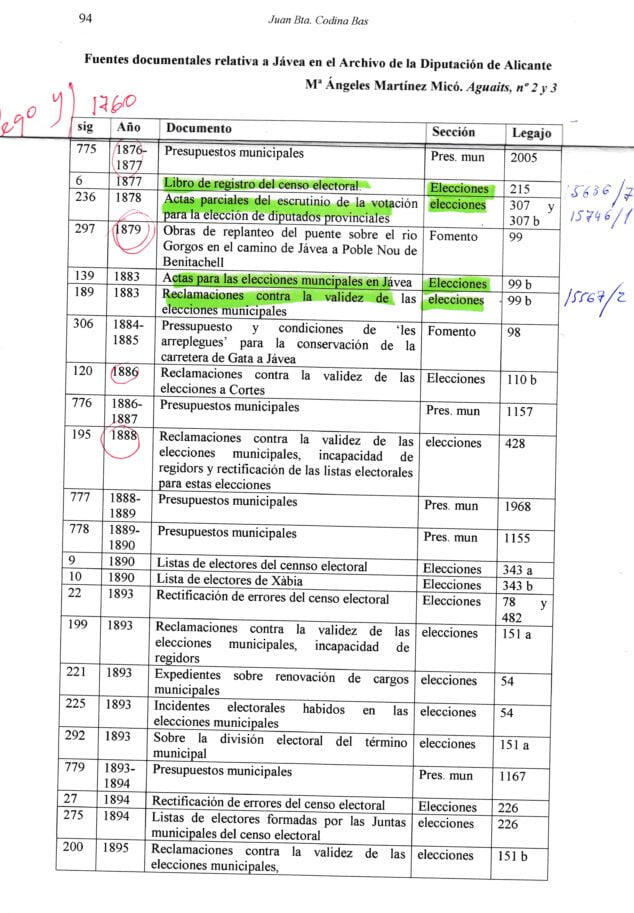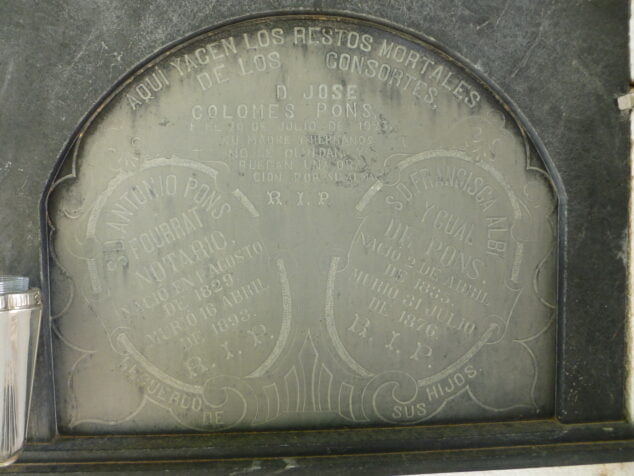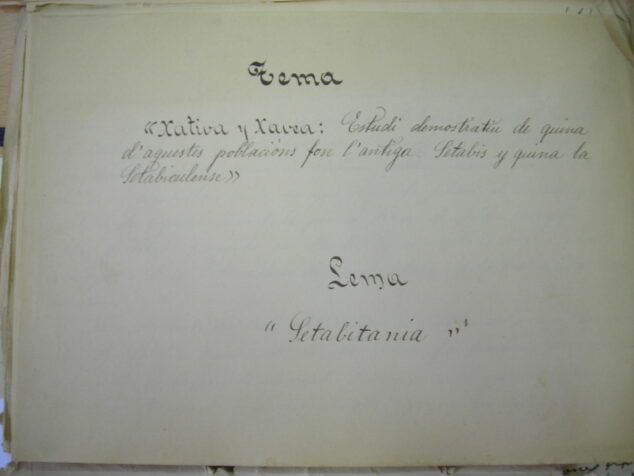The Diputación de Alicante deserves a tribute on its 200th anniversary and will have an initial act of celebration next Sunday, May 15, the day on which the creation of the institution was published 200 years ago. In this, my tribute, I want to highlight and highlight some details of my research in your archive.
In my previous reference I alluded to the legacy of the work of Manuel Rico García and Adalmiro Montero y Pérez. I want to underline the importance of this legacy in which many biographies appear with a bibliography of the writer he writes about. In the two volumes that were published in 1888-1889 only Damián Giner appears in the first and Jaime Pajarón Ripoll in the second, but in this legacy, guarded in the archive of the Diputació d'Alacant, there are bio-bibliographies of the Javienses José Albi Romaní, Christobal Bas, Pedro Bolufer Malonda, José Catalá Cruañes, Ernesto Gavilá, Agustín Ramos Morant, Vicente Ramos Morant, Enrique Parareda, Francisco Segura and Rafael Soler Bisquert.
Of these, authors and many others, emulating Becquer one can say: "forgotten, silent and covered in dust, Rico's legacy was seen, waiting for the helping hand to transcribe it."
In this regard, I will tell you that my wife and I made a trip to the city of Santiago de Compostela and we wanted to visit the University of the city taking advantage of the fact that there were guided tours. You had to sign up to make a group and the visit began at 12 noon.
As we had arrived a while before, I visited the Library and knew that there was a copy of a work by Cristóbal Bas, so I asked for said copy and in that space of time (about 20 minutes) I was able to make a digital capture of the entire booklet of Spiritual awakener, and Evangelical Prayer of the redeemed Redeemer, or Santo Christo del Rescate of the Royal Convent of Our Lady of Mercy, Redemption of captives, of the Villa de Madrid. Published in Valencia, by Jerónim Vilagrasa, 1670, in 4th. At the end, I joined the guided tour and we were able to visit the University, in the event that the visit was for us alone, since no one else had requested it.
Not all the documents you are looking for are in a file and sometimes you have to go from one file to another to complete the data that has been found. Reviewing the Minutes of the Diputación gave me two pieces of information of interest: in the plenary session of October 12, 1909, the Provincial Deputy Celestino Pons formulated the proposal to grant an aid of one thousand five hundred pesetas to José Colomés Pons, a native of Jávea, to study music in Madrid.
This information is interesting because I associated it with the news in the press in which his father appeared: Damián Colomés Peydró, as director of a school in Jávea and who married a sister of the Deputy. José Colomés Pons stood out as a baritone although he died relatively young. This information gave me the explanation of why in the Jávea Cemetery there is a tombstone of Antonio Pons Fourrat and his wife Francisca Albi Gual with an added inscription of José Colomés Pons who died on July 20, 1923.
But there is another piece of news that made me dig into other files to find the solution. In the session of February 26, 1912, it was decided that before the Floral games of Lo Rat Penat a prize could be awarded, consisting of an art object, for the best work on the subject: “Játiva and Jávea. Demonstrative study of which of these populations was the ancient Setabi and which Setabicula” (in the text, Setaviculense, ¿). The award was granted on August 17, 1912 to Luis Fullana Mira. To find out about this work, I went to the Rat Penat where, after some vicissitudes, they let me consult a box containing the prizes awarded in 1912 and 1913, but I was unsuccessful since the work done by Luis Fullana was not there.
Through a friend, Josep Daniel Climent, I found out that in the municipal library In Valencia there were some funds donated by Luis Fullana and there, through the indications of my friend and the help of the librarian, I was able to locate the work of Luis Fullana together with another one by Emeterio Muga who had also participated with a work on the same subject. Well, that work by Luis Fullana, I transcribed it, was and published in the Proceedings of the III Onomástica Conference, Xàtiva, 2008 with an introduction of mine about the author and the content of the work, (pages 61-78) I will point out that Luis Fullana he wrote his work in Spanish and in the almanac Las Provincias of 1916, on pages 91-93 his work titled La Setabitania appears.
I have to say that these investigations involve going through sources and archives where details of our local history can be found.









